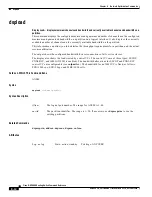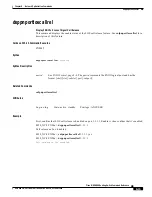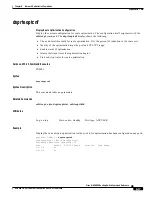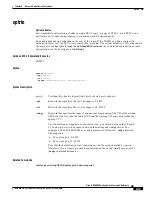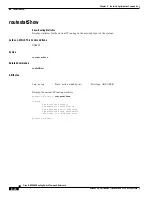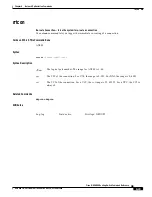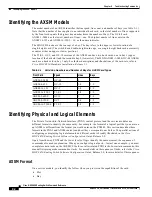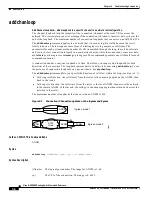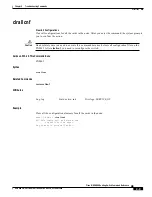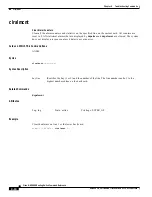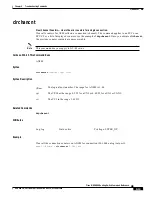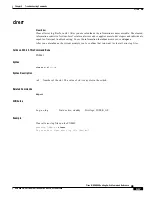
9-2
Cisco MGX 8850 Routing Switch Command Reference
Release 2.0, Part Number 78-10467-04 Rev C0, October 2001
Chapter 9
Troubleshooting Commands
Identifying the AXSM Models
Identifying the AXSM Models
The model number of an AXSM identifies the line speed, line count, and number of bays (see
Table 9-1
.)
Note that the number of lines applies to an individual back card, so the total number of lines supported
by the front card equals the highest line number times the number of bays. The OC-48 card
AXSM-1-2488 has the lowest number of lines—one. The highest number of lines exist on the
AXSM-16-155 and AXSM-16-T3E3—16, as the name indicates.
The MGX 8850 node use the concept of a bay. The bay refers to the upper or lower location of a
single-height card. (The switch has a double-height card cage, so a single-height back card necessarily
occupies either an upper or lower position.)
The T3/E3, OC-3, and OC-12 versions of the AXSM can have two back cards, one in bay 1 (upper
location of the back slot) and the second in bay 2 (lower slot). The MGX-AXSM-1-2488 (OC-48 AXSM)
can have a back card in bay 1 only. For further descriptions and illustrations of the card sets, refer to
Cisco MGX 8850 Hardware Installation, Release 2.1.
Identifying Physical and Logical Elements
The Private Network-to-Network Interface (PNNI) control protocol and the service modules use
different formats to identify the same entity. For example, the format of a logical port that you enter on
an AXSM is different from the format you would enter on the PXM45. This section describes these
formats in the PNNI and AXSM contexts and how they correspond to each other. The parallel actions of
configuring or displaying logical elements on different cards is broadly illustrated in the Cisco
MGX 8850 Routing Switch Software Configuration Guide, Release 2.0.
Apart from the way PNNI and the lower levels of logic identify the same element, the sequence of
commands also needs explanation. When you configure logical ports—for just one example—you must
complete certain tasks on the AXSM CLI before or after related PNNI tasks. For certain commands, this
manual lists prerequisite commands or tasks. For more details on the sequence of tasks, refer to the Cisco
MGX 8850 Routing Switch Software Configuration Guide, Release 2.0, for more details of this sequence.
AXSM Format
On a service module, you identify the follow when you provision the capabilities of the card:
•
Slot
•
Bay
Table 9-1
Valid Line Numbers and Number of Bays for AXSM Card Types
Front Card
Speed
Lines
Bays
AXSM-1-2488
OC-48
1
1
AXSM-4-622
OC-12
1–4
1–2
AXSM-16-155
OC-3
1–8
1–2
AXSM-16-T3E3
T3, E3
1–8
1–2
AXSM-2-622-E
OC12
1
1–2
AXSM-8-155-E
OC3
1–4
1–2
AXSM-16-T3E3-E
T3, E3
1–8
1–2

